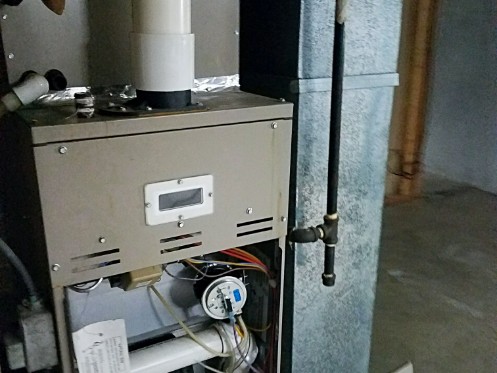If you’re currently shopping for a natural gas furnace for your Austin, TX, home, efficiency is a top consideration. Not only will efficiency impact how much your new heater costs to use, but it will also affect its location, venting system, heating method and overall safety. Read on to find out more.
AFUE Ratings and What a Furnace’s Efficiency Means
The efficiency of modern furnaces is denoted by their annual fuel utilization efficiency (AFUE) ratings. AFUE ratings determine how much of the fuel heaters consume is turned into heat. Thus, a furnace with an AFUE rating of 80% converts 80% of the natural gas that it burns into heat energy. The other 20% is lost as exhaust gases. Not only does this bode poorly for your wallet, but it’s also less than ideal for the natural environment.
Comparatively, furnaces with AFUE ratings of 95% convert only 5% of the fuel they use into harmful emissions. The rest is used to raise the temperature of building interiors.
How 80% Efficient Furnaces Work
If you currently have a standard furnace that operates at 80% efficiency, this unit relies on open combustion. It draws in air from its surroundings and heats it, and then it sends the resulting exhaust gases out of your home via a chimney. Furnaces like these are frequently installed in vented attics or open crawlspaces.
How 95% Efficient Furnaces Work
Furnaces that are 95% efficient use sealed combustion instead. They pull outdoor air in via dedicated polyvinyl chloride (PVC) pipes. These units produce exhaust gases that are released outdoors via PVC pipes as well.
Location Concerns and Cost
Upgrading from an 80% efficient furnace to a furnace with an AFUE rating of 95% or higher isn’t as easy as pulling one unit out and sliding in the new one. If you’re upgrading from a mid-efficiency furnace to a high-efficiency model, your installer will have to run PVC pipe from the interior of the building to the exterior and make other structural modifications. This transition requires a brand-new venting system. Moreover, even if your current furnace storage area can accommodate this dramatically different equipment, you’ll still need more space. High-efficiency furnaces or furnaces with AFUE ratings of 90% or higher have two heat exchangers. This makes these units significantly larger than their predecessors and a bit more complicated to house.
Why Have Two Heat Exchangers?
Carbon monoxide (CO) and other exhaust gases are the result of incomplete fuel combustion. In a mid-efficiency furnace with an AFUE rating of 80%, at least one-fifth of the natural gas consumed is wasted. Worse still, this number increases as time goes on, given that all fuel-combusting heaters progressively lose efficiency with ongoing use.
High-efficiency furnaces minimize this loss by sending the exhaust gases that leave their primary heat exchangers into secondary heat exchangers. These smaller components extract the residual heat from the exhaust before it exits the building. The result is fewer emissions impacting the natural environment and more heat for the residents in the building without additional fuel use or spending.
Furnace and Installation Costs
Having a furnace with a 95% AFUE rating might seem like the best choice, but there are several reasons why it might not be the best choice for you. Not only do high-efficiency furnaces have higher upfront costs than mid-efficiency models, but they also cost more to install. When the necessary building modifications for these projects are significant, it’s unlikely that homeowners will recoup their costs within a reasonable amount of time. Even when considering the higher costs of using a mid-efficiency furnace, you might find that you’ll spend less overall by simply sticking with the storage area and venting system you currently have.
Why Choose a Furnace With a 95% AFUE Rating?
Are you having your crawlspaces encapsulated for humidity control, pest treatment or pest prevention? Have you made changes to your attic that have negatively impacted ventilation? In each of these cases, continuing to use an open combustion furnace with an AFUE rating of just 80% is too risky. Without proper ventilation in your furnace’s storage area, there’s a good chance that carbon monoxide will eventually enter your living space.
Better for the Environment and Better for You
When properly installed, well-maintained and working as they should, furnaces with AFUE ratings of 95% or higher are both better for the environment and better for humans. These heaters produce just one-quarter the exhaust that mid-efficiency furnaces do, and their sealed combustion chambers greatly reduce the risk of CO leaks. Thus, if you’re interested in minimizing your carbon footprint and aren’t bothered by the required structural modifications, a high-efficiency furnace is probably the right choice.
We’re committed to helping homeowners in Austin, TX, make informed decisions about their heating equipment. We offer heater and AC installation, maintenance and repairs. We also provide indoor air quality improvements, duct cleaning and CO detection. To schedule an appointment, contact Quality Cooling & Heating.


